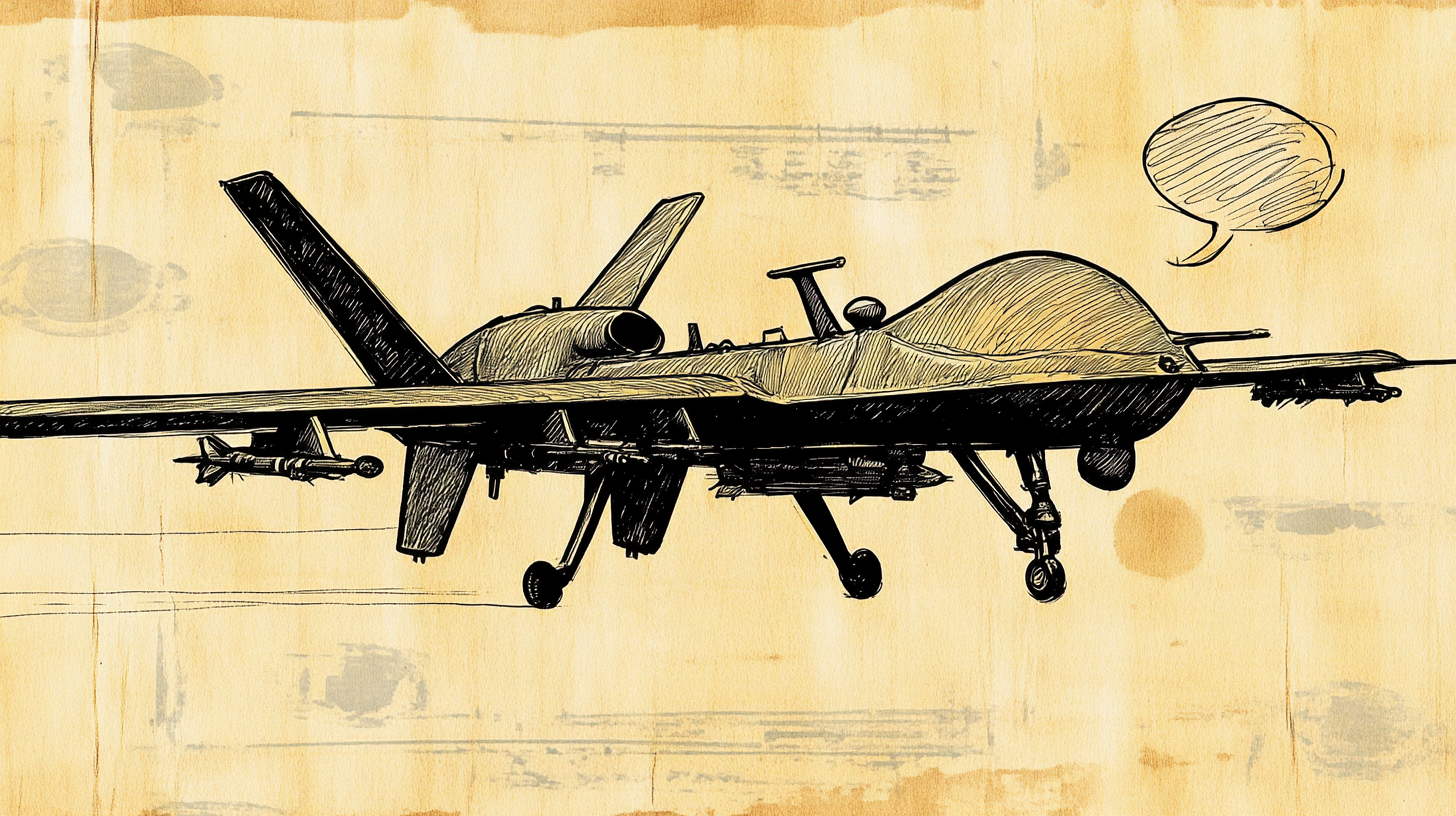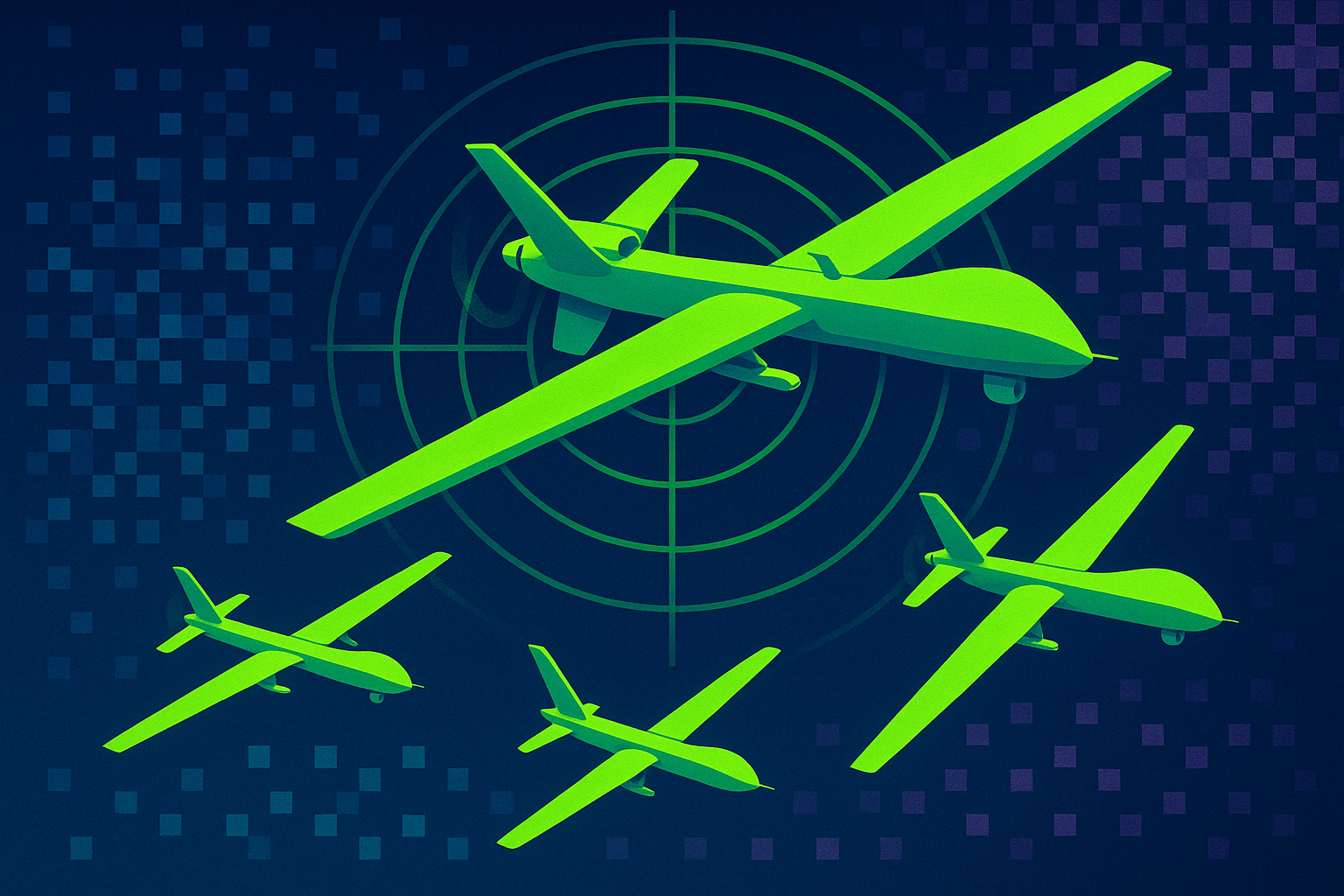Chinese researchers have created an AI system that combines large language models with reinforcement learning to control military drones.
The system reportedly outperforms both traditional pure reinforcement learning approaches and skilled human operators in making aerial combat decisions. It processes data and adapts its attack strategy up to ten times per second through a multistep process, according to a report in the South China Morning Post.
First, the system uses reinforcement learning to analyze sensor data from the drone. This data is converted into vector parameters and then into human language for the language model to process. Finally, the language model's decisions are translated into specific control commands for the drone, such as controlling an electronic warfare jammer to create false targets on enemy radar displays.
Trained on military data
The researchers trained the language model on an extensive collection of military information, including technical literature on radar and electronic warfare. The training data also included classified materials such as combat logs, weapons inventories, and military instruction manuals, most of which were in Chinese.
The South China Morning Post reports that the researchers published their findings in the Journal of Detection & Control on October 24. The project, which is still in the testing phase, is a collaboration between the Chengdu Aircraft Design Institute, known for developing China's J-20 stealth fighter, and Northwestern Polytechnical University in Xian.
Global race for military AI Drones
This Chinese experiment is part of a broader international push toward military AI applications, particularly in drone technology. The US military has invested about a billion dollars in the Switchblade kamikaze drone series, and is developing AI pilots for both drones and fighter jets. US forces are also testing ground-based autonomous systems. US defense contractor Anduril recently unveiled an AI-controlled attack drone that can autonomously carry out deadly strikes on command.
The war in Ukraine has accelerated the development of autonomous, lethal unmanned systems. According to Robert Brovdi, founder and commander of the special drone unit "Madyar Birds," Ukrainian drones could fly completely autonomously without human pilots in as little as six months. Some drones have reportedly launched AI-driven attacks on their own after losing contact with operators.






